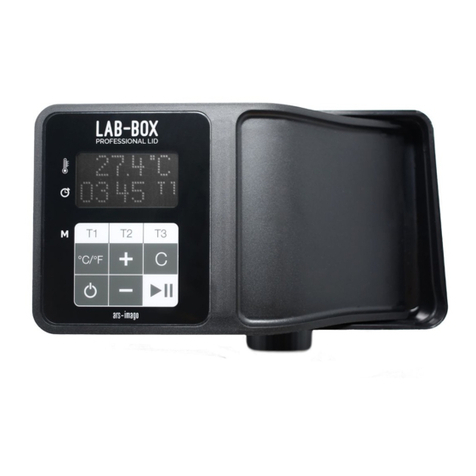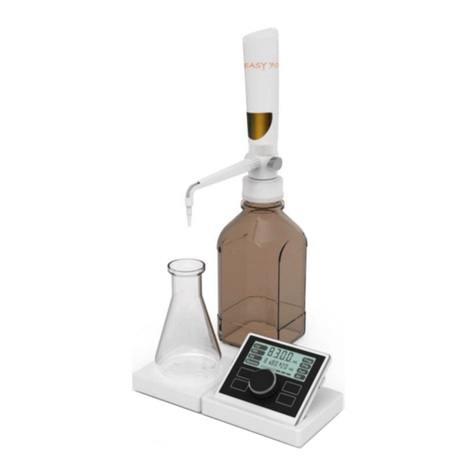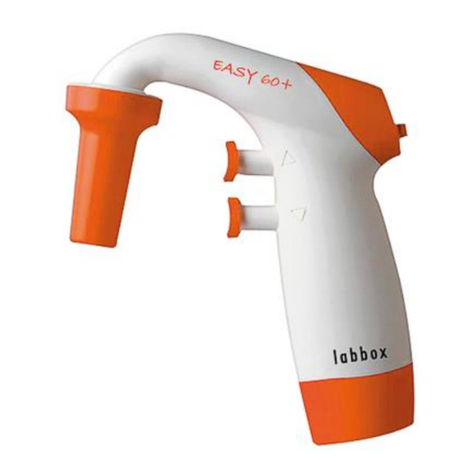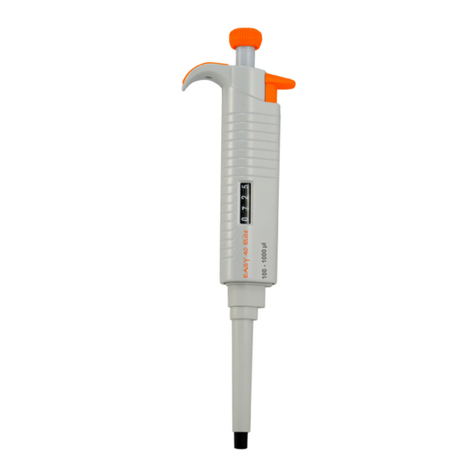
- 7 -
• To decrease the volume, turn the
volume seng knob clockwise.
• To increase the volume, turn the
volume seng knob counterclock-
wise.
• Do make sure that the d e s ired
delivery volume is set in-line with
pointer.
• Turn the volume lock to “lock” the
vol um e se ng , p reve nn g any
accidental change in the volume
during pipeng.
For this pipee the delivery volume of
liquid is set using the digital display. A
pointer is u sed to set exact or
intermediate volumes using the scale
on the last wheel of digital display
(refer point # 4.6)
The Locking mechanism ensures that the volume adjustment
knob remains at the setpoint while aspirang or dispensing sample
liquids. Any effort to rotate the volume adjustment knob with the
locking mechanism engaged will damage the locking mechanism
and void the warranty.
5.2 SETTING THE VOLUME
• To set the volume turn the volume lock lever to the “unlock”
posion so that the volume can be adjusted to the desired
setpoint within the permied volume range. Refer following
images
• Aer pipeng acids or other corrosive liquids that emit vapors,
remove the p-cone and rinse the piston, O-ring and seal with
dislled water.
• Do not pipee liquids having temperatures above 70°C. (Not
recommendable)
• Make sure that liquids never enter the p-cone. To prevent
this:
Avoid laying the pipee horizontally when p is filled with
sample. As liquid may enter in and contaminate the sample
during next pipeng cycle.
When there is liquid in the p, press and release the volume
adjustment knob slowly and smoothly.
Never turn the pipee upside down.
• Always store the pipee without p on a shelf mounng
stand supplied with or a pipee carousel stand.
• Highly recommended to calibrate the pipee once in every 3-
6 months (depending on the sensivity of usage) for beer
performance. The calibraon must be carried by gravimetric
method in accordance of DIN ISO 8655-6.
Volume
adjustment
Knob
100
1000
100
1000
µl
100
1000
µl
































